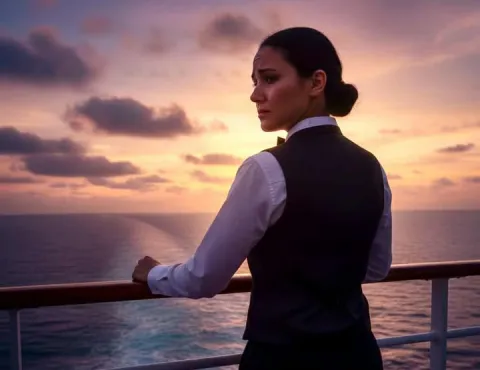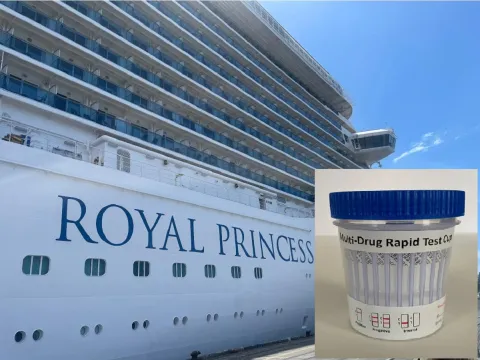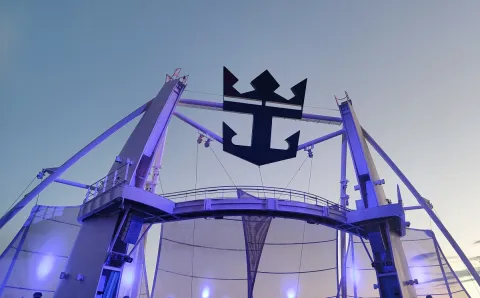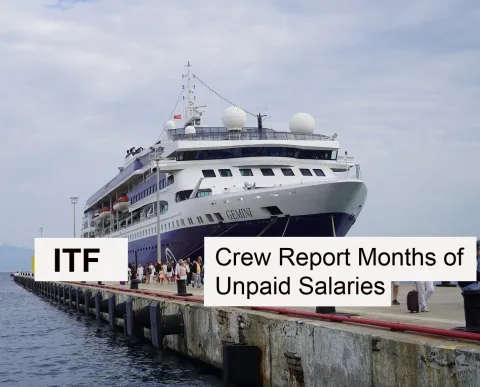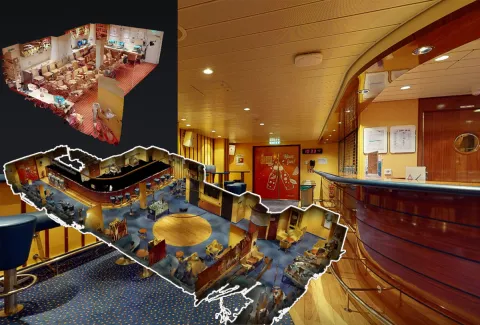
If you happen to be a guest aboard a cruise ship, prepare to be delighted by the incredible culinary offerings. Irrespective of the cruise line, food takes precedence as the top priority in meeting and exceeding passengers' expectations. Regardless of your personal taste preferences, the food service on board the ship is truly unparalleled.
The world of cruise ship cuisine has always captivated me, particularly due to the sheer abundance and diversity it offers. However, it is important to note that nowadays, most cruise passengers assume that all the food served on board is freshly prepared. Yet, this is not always the case.
Cruise Ship Buffet
This dining option is the one most passengers try soon after they board the ship. There are many food options, and the quality can range greatly depending on the cruise line.
On most of the cruise lines, you can enjoy the buffet after embarkation or before disembarkation. It's also great if you want a quick meal any time of the day.
There are often dining themes such as Indian one night or Asian another night. The cruise ship buffet never has a dress code, making it popular for some passengers.
A day aboard a cruise ship can indeed revolve around food. If you are a guest on the ship, Three days into sailing, you will start feeling like you woke up full from the night before and still hungry for breakfast.
On most cruise ships, there are multiple restaurant choices and various cuisines. You can find healthy or vegetarian food, ethnic options, and everything from fast-food burgers to upscale molecular gastronomy dishes. Meals can be quick or lengthy, formal or casual.
The choice can be overwhelming for a new cruiser – as can the complicated rules around who can eat where and when while wearing what. Even if you don't live for food, you'll want to peruse this guide to cruise ship food and dining to get the lay of culinary land before your next sailing.
You do not have to pay for food on a cruise – but you might want to.
Unless you're sailing on an all-inclusive luxury cruise ship, you'll find two types of restaurants on board a cruise ship: accessible venues and extra-charge specialty restaurants.
The included dining venues are typically the main dining room or rooms, large banquet-style spaces that serve sit-down dinners off a wide-ranging menu. On some ships, you will be assigned to a specific main dining room; other ships, such as Norwegian Cruise Line's fleet, will offer a couple, and you can choose which one to go to on any given evening. Smaller vessels may only have one main dining room on board.
The other standard included option is the buffet, typically located near the pool. The buffet will offer multiple themed stations (salad bar, carvery, deli, pasta station, dessert bar, etc.) and will either be self-serve or have a crew ready to portion out food from large serving dishes for you. Once you've filled a plate, you find your table, either indoors or sometimes outside. You can return for seconds, thirds, and fourths until you're full.
Other included cruise food options will vary by ship and cruise line. Many have poolside grills serving burgers and hot dogs. Some will have casual cafes and complimentary pizza, Mexican, Asian, fried chicken and barbecue restaurants or food counters.
Some cruise lines – such as Royal Caribbean, Celebrity Cruises, and Holland America – have special restaurants reserved for VIP guests, usually a mix of passengers in the top suites and the most frequent cruisers on that line. These dining venues are included in the cruise's cost yet may require dinner reservations.
What is specialty dining on a cruise?
Specialty dining is the cruise industry name for onboard restaurants you must pay for. Some charge a flat cover to dine there; others price dishes a la carte, as you'd find in most land-based eateries.
These extra-fee cruise ship restaurants cover a wide variety of cuisines and styles. You might find a family-style Italian trattoria, group dining at a teppanyaki grill, or a French restaurant perfect for date night. Steakhouses are typical, though they can have American, Brazilian, or Italian influences. Sushi and Asian-fusion restaurants are popular, as are broader seafood venues, both upscale and lobster shack-style.
Royal Caribbean has a new southern comfort food restaurant, and its molecular gastronomy venue, Wonderland, is something different—Carnival partners with Emeril Lagasse to offer a New Orleans-themed Creole restaurant.
If you want to look for intimate Chef's Table dining events for a gourmet meal paired with wine, personally planned by one of the onboard chefs, most cruise lines offer this amazing experience. When I was working on Carnival Cruise Lines, there was the most amazing steakhouse on board; I even had an opportunity to have dinner there for my birthday. The food was absolutely fantastic.
You'll want to make reservations in advance for specialty restaurants, though walk-ins are allowed if tables are available. Try to book your favorite eateries online before your sailing; if not, make it a priority to get dining times lined up as soon as you can on your first day on board.
What is open dining vs. set-seating on a cruise?
When you book many big-ship cruises, you'll be asked to choose early seating, late seating, or flexible or anytime dining. What does this mean?
Lines like Carnival Cruise Line, Royal Caribbean, Holland America, and Princess manage the flow of passengers in and out of their main dining rooms by assigning cruisers to specific dining rooms and times.
Passengers who choose set-seating dining will opt for an early dinner (usually around 5:30 or 6 p.m.) or a late dinner (between 7:30 and 8:30 p.m.). They will be assigned a specific table with the same servers every night. A table might be one four-person family, or a mix of unrelated singles, couples, and groups gathered at a 10-person table. Desirable two-tops can take a lot of work to come by.
Because only some people want to eat simultaneously and with the same people every night, cruise lines reserve several slots for a flexible dining option. You might see these as "My Time Dining" or "Anytime Dining." Guests who choose this option can attend the main dining room for dinner anytime during designated open hours (typically 5:30 to 9 p.m.).
The catch is you have to wait for a table, and you may not be able to get the table size you want at the time you want. You might score a two-top on one night and have to eat at a group table the next or wait an hour to be seated. On the other hand, if you make friends on board who also choose the flexible dining option, it's easy to meet up for dinner.
Several lines have done away with the assigned dining concept, most notably luxury lines such as Regent Seven Seas Cruises, Silversea, and Seabourn, and brands such as Norwegian Cruise Line and Virgin Voyages. The ships in these lines offer multiple onboard dining venues where you either make a reservation or try your luck as a walk-in, as you would at any land-based restaurant. Most will have one main dining room venue that is larger and does not require reservations or extra fees to eat there.
Food Waste
Cruise ships create massive food waste compared to land-based restaurants to keep their passengers fed. An overabundance of perishable food is cooked based on the estimates of the chefs.
With this in mind, it's best to only eat what you can. Maybe all the uneaten food from every vessel in the world is the solution to end world hunger.
Do you ever wonder what happens to ship food waste? It is pulped, dehydrated, and sent out into the ocean as fish food twelve miles offshore.
Is this a good idea? Probably not, because fish don't need any of the food humans consume.
However, many cruise lines change how they serve food to cut back on cruise ship food waste. They serve fruits whole, so if it isn't consumed, it's added to fruit salads.
Soups or stews contain uneaten meats and vegetables. Sushi has become a la carte due to cost and waste.
If you are a guest, you can also help with the food waste, especially in the buffet. Do not take too much food at once, because there is a tendency that you will have a lot of over left food on your plate. Instead, take as many trips to the buffet as you want; this will help decrease the food waste on board the ship.
Crew Insights
Articles and experiences shared by crew members working on cruise ship. Find out more about ship life at sea together with tips and advices for first time crew members and cruise oldtimers.




